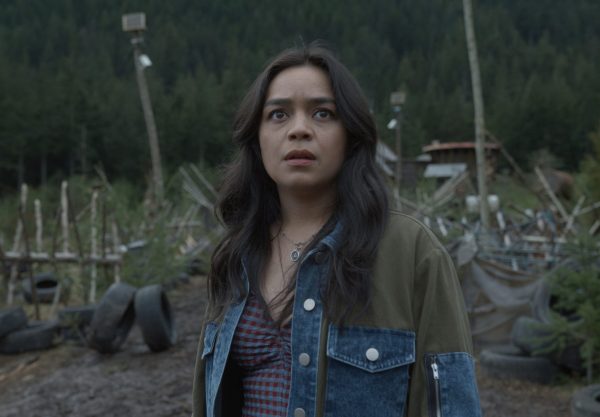Ecoterrorism and other fun pastimes: ‘How to Blow Up a Pipeline’
Credit: IMDB
Forrest Goodluck in “How to Blowup a Pipeline”
The heist film is dying out. What used to be the domain of directors interested in genre and ideological experimentation has instead been replaced by the filmic equivalent of tepid water. Movies like “The Killing” used to be plentiful, blending political themes such as the economic subjugation with white knuckle filmmaking. These days, such a film being released is like finding a diamond in a coal mine.
Daniel Goldhaber’s latest picture, “How to Blow Up a Pipeline,” breaks this trend. It is a rallying cry with a narrative so tight it could explode at any moment. It brims with righteous indignation and is nothing less than a call for radical resistance in the face of our climate’s destruction.
“How to Blow Up a Pipeline” sprouts from unlikely origins. It is adapted from the nonfiction book of the same title, written by Andreas Malm, which makes the claim that property damage, sabotage and vandalism are crucial to defeating the climate crisis. It is a provocative thesis to say the least. The film fictionalizes the book and follows eight individuals who, each disillusioned with the current state of climate activism for various reasons, decide to blow up an oil pipeline in Texas. Everything is meticulously detailed, from ethical debates about violent resistance to the planning process to the actual cataclysmic act. No stone is left unturned.
In this respect, “How to Blow Up a Pipeline” has much in common with the films of Jean-Pierre Melville. “Army of Shadows” dealt with the French rebels during the Nazi occupation in World War II and was primarily concerned with the process of resistance. What would the procedures and aesthetics of resisting fascism look like? Likewise, “How to Blow Up a Pipeline” wants to interrogate these same issues but in the face of the climate crisis. Goldhaber focuses on the labor that would go into an act of ethical ecosabotage.
This might sound boring, but he uses all the tools of the heist genre to generate some of the most tense setpieces in recent memory. Smash zooms, a pulsating synth score and a nonlinear timeline coalesce into a riveting climax. Something as simple as setting off a firework becomes both radical and thrilling when viewed in this film’s context.
All this is complimented by the depths found in the characters. Each one has their own distinct reason for being there. Dwayne (Jake Weary) is a blue collar worker whose property in Texas no longer has water due to complications with the pipeline’s construction. Michael (Forrest Goodluck) is a member of an indigenous American tribe whose land has been infringed upon by an oil refinery. Xochitl and Shawn (Ariela Barer, Marcus Scribner) are college students who are disillusioned by constant talk of divestment and incremental change, which they view as too slow in the face of humanity’s imminent death. The film contrasts these backgrounds to create a structural critique of the climate crisis. The prevailing consensus is that global warming affects everyone equally. “How to Blow Up a Pipeline” pushes against this. It is an issue where the least, those most vulnerable, are taken first. People at the top of the economic food chain remain insulated from the very issues they cause.
It is a shame that such a prescient film has grossed so little at the box office: as of writing this, just a tad over $340,000. Perhaps the film’s radical content, which some critics have deemed “propaganda,” coupled with minimal marketing have prevented it from latching on with mainstream audiences.
Nonetheless, this is a film which is not only aesthetically audacious but more relevant than ever. At a time when lawmakers are not only oblivious to, but also actively resist progressive change, it is easy to give into climate fatalism. “How to Blow Up a Pipeline” stands in opposition to this and asks audiences to conceptualize a better future.










